
Marketing Secrets, Part 4
January 19, 2022 | RIA Resources

Marketing is likely not something you’re used to doing. However, you’re now the boss running your own firm, and marketing is how you get your name out there. While a lot of work, if done correctly, your marketing efforts will run primarily on autopilot, which frees you to handle the many other tasks you’ll need to juggle as an independent RIA.
Remember, marketing will shape how prospective clients view your firm. So it’s time to put your best foot forward and start building your brand.
Social Media
Social media is a necessary evil for any business in today’s uber-connected world. Facebook has almost three billion active monthly users, YouTube over 850 million, and Twitter over 300 million. That’s a massive potential customer base. You might be tempted to create a social media account for every social network. Don’t do it! Instead, pick those that have the best chance of reaching your target audience. It’s best to focus your energy on just one or two platforms to start.
It’s important to start building out your website content since this is one of the best ways to begin to attract prospective clients. Here’s 4 Tips for Creating High-Quality Social Media Content at a Low Cost:
- Use Stock Photo Websites – high quality and royalty free images as low as $1 each.
- Get Creative with Your Props and Your Talent – No budget? No problem. Get creative with what’s around you. Start with the obvious: What props can you feature that you already own?
- Make the Most of Your Photo Shoots – Make a list of all the shots you want to capture with your props and models, and within the time frame that you have. Swap different props in and out, and shoot from a variety of angles. It may take more time upfront, but you’re setting yourself up for success in the long run.
- Reuse, Repurpose, Reinvent – Get more life out of your social media content than Madonna’s gotten out of her career. Call on your fans to be your creators, continuously edit, reformat your content for other platforms, and then share it all over again.
Promote your products and services, and blog posts. The main goal should be conversions. Thinking of your social media account as part of the sales funnel is a wiser bet. Social media is great for the “awareness” and “interest” stages, but the client should be on your website for the later stages where you control how the message is presented.
With some careful research on your target audience, social media could become a major source of leads for your firm. We’d argue it’s perhaps the second most important thing to focus on after SEO.
Blogging
Every RIA will need to have a core set of pages that introduce the firm to the prospective client.
- About Us: This should introduce your RIA and its people. It is also the perfect spot to tout the things that differentiate you from your competitors. You can optionally break out your team bios into their own section, it’s up to you.
- Services/What We Do: Give the reader a general overview of what you offer. You might even want to include frequently asked questions on some pages — Google seems to rank pages with some type of FAQ higher than those that don’t.
- Recognition: If you or your team has earned some type of recognition for past work, why not share it? And as you grow, you can add recognition of your firm and the team onto this same page. Giving your prospective client assurance that you’re not some fly-by-night outfit is essential.
- Contact: Of course, you need a contact us page. Don’t forget to include a phone number and yes, even a postal address. We’d also recommend placing a “call to action” — a link or button asking for the sale (i.e. “Call Today,” “Get a Quote”) — on every page to encourage conversions in addition to creating a separate contact page.
But even with all these essential pages, you’re still not going to have the 30-50 pages we suggested. This is where starting a blog can help you grow traffic to your site. It’s a quick way to build your page count, and if you do it right, can be a web traffic gold mine.
Using the SEO tools we recommended above, start writing content related to the work you do. Use the blog to introduce your services, advisors, and products to your customers.
While it may be tempting to market your firm throughout these blogs heavily, this is not the best way to write. The prospective client is already on your site, so there’s no need to overwhelm them with “salesy” content. informational content performs much better. Just mention your firm as a call to action at the very end.
Keep in mind that once you start blogging, you’ll need to do it regularly to maximize SEO benefits. Aim for at least once a month and preferably once a week if you can.
Podcast
If you’re not camera or microphone-shy, a podcast is a great way to gain your new independent RIA exposure. Again here, the purpose of your podcast should be informational and not promotional to get the most impact.
All the above rules apply, as you’ll have to use SEO and marketing to get the word out. We’d recommend holding off on more involved projects like these, as any of the above three areas will offer much more significant returns early on with less work.
Summary
We’ve now focused on how to name your firm, trademark it, create your logo, build your website, create your RIA’s brand, tips on SEO, social media, blogging, and podcasting. Marketing is a lot. Now is the time to take some time and reflect on all you’ve accomplished. There’s still distance to travel but look how far you’ve come!
The Shoestring RIA is a series of articles written and published by the BillFinTM team at Redi2 Technologies designed to help RIAs as they start out on their own. We recognize just how challenging it is to venture out and build a successful business. Our articles will be focused on helping these new businesses with a wide range of topics.
Links
The 26 Steps I Took To Set Up And Launch My Own Independent RIA
